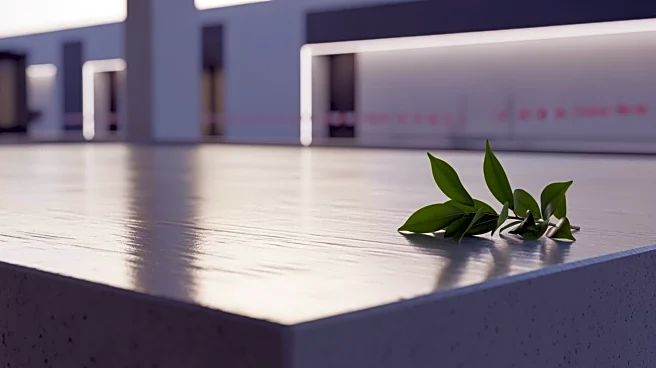What's Happening?
The global self-leveling concrete (SLC) market is projected to grow significantly, reaching an estimated value of $10.4 billion by 2030. This growth is driven by the increasing demand for quick-install
flooring solutions and the adoption of high-performance materials in construction. Innovations in polymer-based formulations are enhancing the market's appeal, offering improved flowability and faster setting times. Key developments include the introduction of fast-curing SLC formulations for commercial projects and the expansion of polymer-enhanced products for industrial use. The market is also seeing mergers and acquisitions aimed at strengthening portfolios in the SLC sector.
Why It's Important?
The expansion of the self-leveling concrete market is crucial for the construction industry, which is increasingly focused on efficiency and sustainability. The adoption of SLC solutions supports faster project execution and improved flooring performance, which are essential for modern construction demands. The market's growth is also indicative of a broader shift towards sustainable building practices, as SLC products often incorporate eco-friendly additives. This trend benefits construction companies and material suppliers by providing innovative solutions that meet the evolving needs of the industry. Additionally, the market's expansion could lead to job creation and economic growth in related sectors.
What's Next?
As the self-leveling concrete market continues to grow, further innovations in product formulations are expected. Companies may focus on developing SLC solutions with enhanced environmental benefits, such as reduced carbon footprints and improved energy efficiency. The market could also see increased competition as more players enter the space, driving further advancements in technology and product offerings. Stakeholders in the construction industry will likely monitor these developments closely, as they could impact project costs and timelines. Additionally, regulatory changes related to sustainable construction practices may influence market dynamics.











